
homeassistant-midea-air-appliances-lan
This Home Assistant custom component adding support for controlling Midea air conditioners and dehumidifiers on local network.
Stars: 343
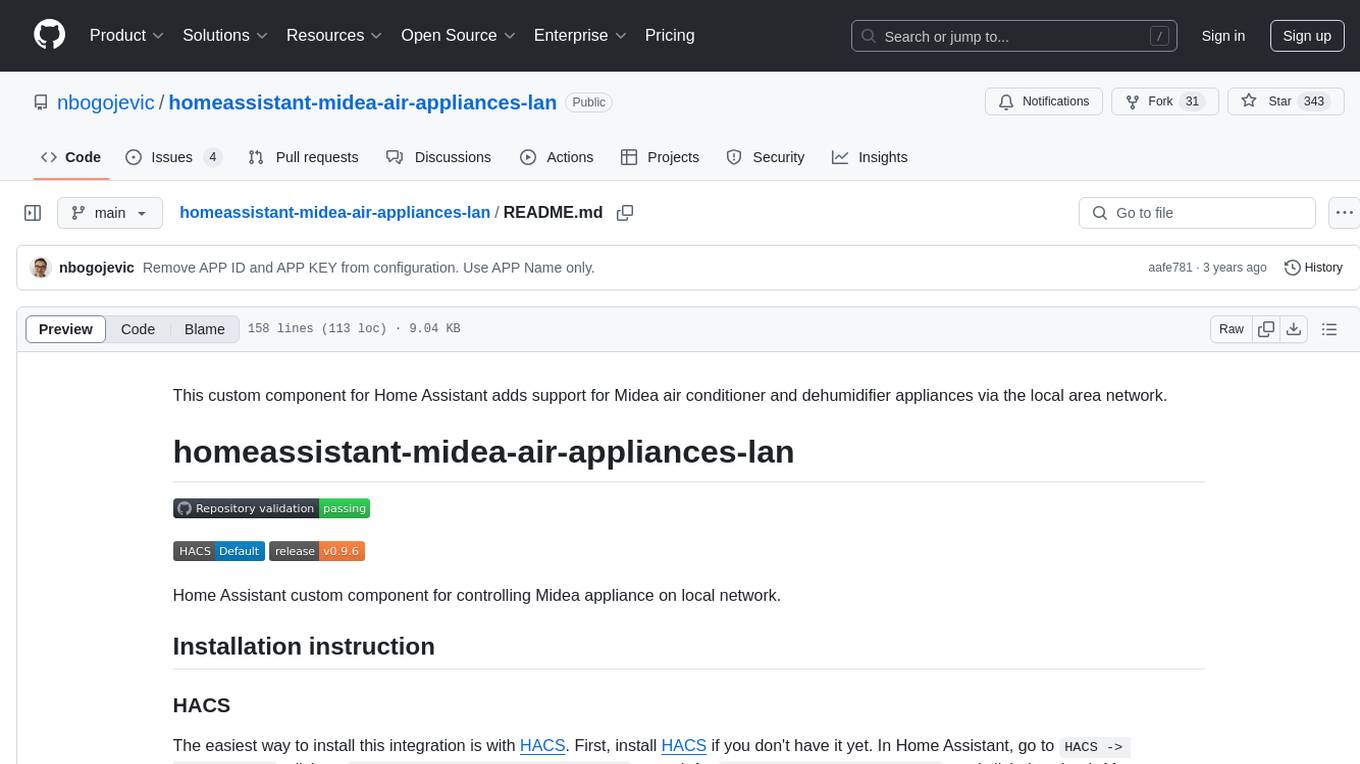
This custom component for Home Assistant adds support for controlling Midea air conditioner and dehumidifier appliances via the local area network. It provides integration for various Midea appliances, allowing users to control settings such as humidity levels, fan speed, and more through Home Assistant. The component supports multiple protocols and entities for different appliance models, offering a comprehensive solution for managing Midea appliances on the local network.
README:
This custom component for Home Assistant adds support for Midea air conditioner and dehumidifier appliances via the local area network.
Home Assistant custom component for controlling Midea appliance on local network.
The easiest way to install this integration is with HACS. First, install HACS if you don't have it yet. In Home Assistant, go to HACS -> Integrations, click on + Explore & Download Repositories, search for Midea Air Appliances (LAN), and click download. After download, restart Home Assistant.
Once the integration is installed, you can add it to the Home Assistant by going to Configuration -> Devices & Services, clicking + Add Integration and searching for Midea Air Appliances (LAN) or, using My Home Assistant service, you can click on:
- Update Home Assistant to version 2021.12 or newer.
- Clone this repository.
- Copy the
custom_components/midea_dehumidifier_lanfolder into your Home Assistant'scustom_componentsfolder.
- Add
Midea Air Appliances (LAN)integration via UI. - Enter Midea cloud username and password and select mobile application you use.
- The integration will discover appliance on local network(s).
- If an appliance is not automatically discovered, but is registered to the cloud account, user is prompted to enter IPv4 address of the appliance.
- If you want to use integration with air conditioner unit(s), please select the checkbox on
Advanced settingspage.
- If IPv4 address of appliance changes, new IPv4 address will not be used until Home Assistant's restart.
- If Home Assistant installation doesn't have access to physical network, the integration may not discover all appliances.
- Dehumidifier modes correspond to Inventor EVA ΙΟΝ Pro Wi-Fi model. Your dehumidifier might use different names (e.g.,
Boostinstead ofDry) - Having two integrations accessing the same device can result in undefined behavior. For example, having two Home Assistant instances accessing same device, or using one of other Midea appliance integrations in combination with this one. To avoid problems, use a single integration - this one 🙂.
- If you encounter issues after upgrading, uninstall the integration, restart Home Assistant and re-install it.
- Some of sensors and switches are disabled by default. You need to enable them manually. See tables below for more information.
- Temperature sensor on dehumidifier is often under-reporting real ambient temperature. This may be due to sensor proximity to cooling pipes of the humidifier, algorithm, or electronics error. The under-reporting depends on the active mode, and stronger modes may result in larger offset from real temperature.
- Some Midea appliances, built in 2021 and later, use Tuya based patform and this integration will not work with them. In some cases those appliances have have same model names as old ones.
- When migrating from version 0.6 or 0.7 to 0.8, integration may fail. Please remove and re-install integration.
- Comfee MDDF-16DEN7-WF or MDDF-20DEN7-WF (tested with 20L version)
- Inventor EVA ΙΟΝ Pro Wi-Fi (EP3-WiFi 16L/20L) (tested with 20L version)
- Inventor Eva II Pro Wi-Fi (EVP-WF16L/20L)
- Pro Breeze 30L Smart Dehumidifier with Wifi / App Control
- Midea SmartDry dehumidifiers (22, 35, 50 pint models)
- Midea Cube dehumidifiers (20, 35, 50 pint models)
Supported are V3 and V2 protocols that allow local network access. V3 protocol requires one connection to Midea cloud to get token and key needed for local network access. Some old models use V1 XML based protocol which is not supported. Some newer models use Tuya protocol.
This custom component creates following entities for each discovered dehumidifier:
| Platform | Description |
|---|---|
humidifier |
Dehumidifier entity. Depending on the model following modes are supported: Set, Continuos, Smart (if supported), Dry (if supported), Antimould (if supported), Purifier (if supported). |
fan |
Fan entity for controlling dehumidifier fan. Three preset modes are available: Low, Medium and High. |
binary_sensor |
Problem sensor indicating when tank is full. |
binary_sensor |
Problem sensor indicating when tank is removed (created if device announces that pump is supported). |
binary_sensor |
Problem sensor indicating when filter needs cleaning (created if device announces that filter is supported). |
binary_sensor |
Cold sensor indicating defrosting is active (disabled by default). |
sensor |
Sensors for current relative humidity measured by dehumidifier. |
sensor |
Sensor for current temperature measured by dehumidifier. |
sensor |
Sensor for water level in the tank (created if device announces that water level is supported). |
switch |
Switch ion mode on and off (created if device announces that (an)ion mode is supported) |
switch |
Switch pump on and off (created if device announces that pump is supported). |
switch |
Switch to enable pump (created if device announces that pump is supported). |
switch |
Switch to activate beep on action (disabled by default). |
In addition to this, humidifier entity will have additonal attributes describing capabilities, current and last error code, time of last error, as well as last payloads received.
This custom component creates following entities for each discovered air conditioner:
| Platform | Description |
|---|---|
climate |
Climate entity. |
sensor |
Sensor for outside temperature measured by air conditioner. |
switch |
Switch purifier mode on and off (enabled if device announces that it is supported). |
switch |
Switch dryer mode on and off (disabled by default). |
switch |
Switch to activate beep on action (disabled by default). |
switch |
Switch display to Fahrenheit degrees (enabled if device announces that it is supported). |
switch |
Switch turbo fan on and off (enabled if device announces that it is supported). |
switch |
Switch screen on and off (enabled if device announces that it is supported). |
In addition to this, climate entity will have additonal attributes describing capabilities, current and last error code, time of last error, as well as last payloads received.
If there are problems while using integration setup, an advanced debug logging can be activated via Advanced settings page.
Once activated, logs can be see by clicking at:
Select Load Full Home Assistant Log to see all debug mode logs. Please include as much logs as possible if you open an issue.
Debug logging can be activated without going through setup process:
On entry page, paste following content:
service: logger.set_level
data:
custom_components.midea_dehumidifier_lan: DEBUG
midea_beautiful: DEBUGIt is possible to activate debug logging on Home Assistent start. To do this, open Home Assistant's configuration.yaml file on your machine, and add following to logger configuration:
logger:
# Begging of lines to add
logs:
custom_components.midea_dehumidifier_lan: debug
midea_beautiful: debug
# End of lines to addHome Assistant needs to be restarted after this change.
https://github.com/nbogojevic/midea-beautiful-air
Following Lovelace cards work well with this integration:
https://github.com/MiguelCosta/Dehumidifier_Comfee_Card
https://github.com/sicknesz/midea-inventor-card
Midea, Inventor, Comfee', Pro Breeze, and other names are trademarks of their respective owners.
For Tasks:
Click tags to check more tools for each tasksFor Jobs:
Alternative AI tools for homeassistant-midea-air-appliances-lan
Similar Open Source Tools

homeassistant-midea-air-appliances-lan
This custom component for Home Assistant adds support for controlling Midea air conditioner and dehumidifier appliances via the local area network. It provides integration for various Midea appliances, allowing users to control settings such as humidity levels, fan speed, and more through Home Assistant. The component supports multiple protocols and entities for different appliance models, offering a comprehensive solution for managing Midea appliances on the local network.
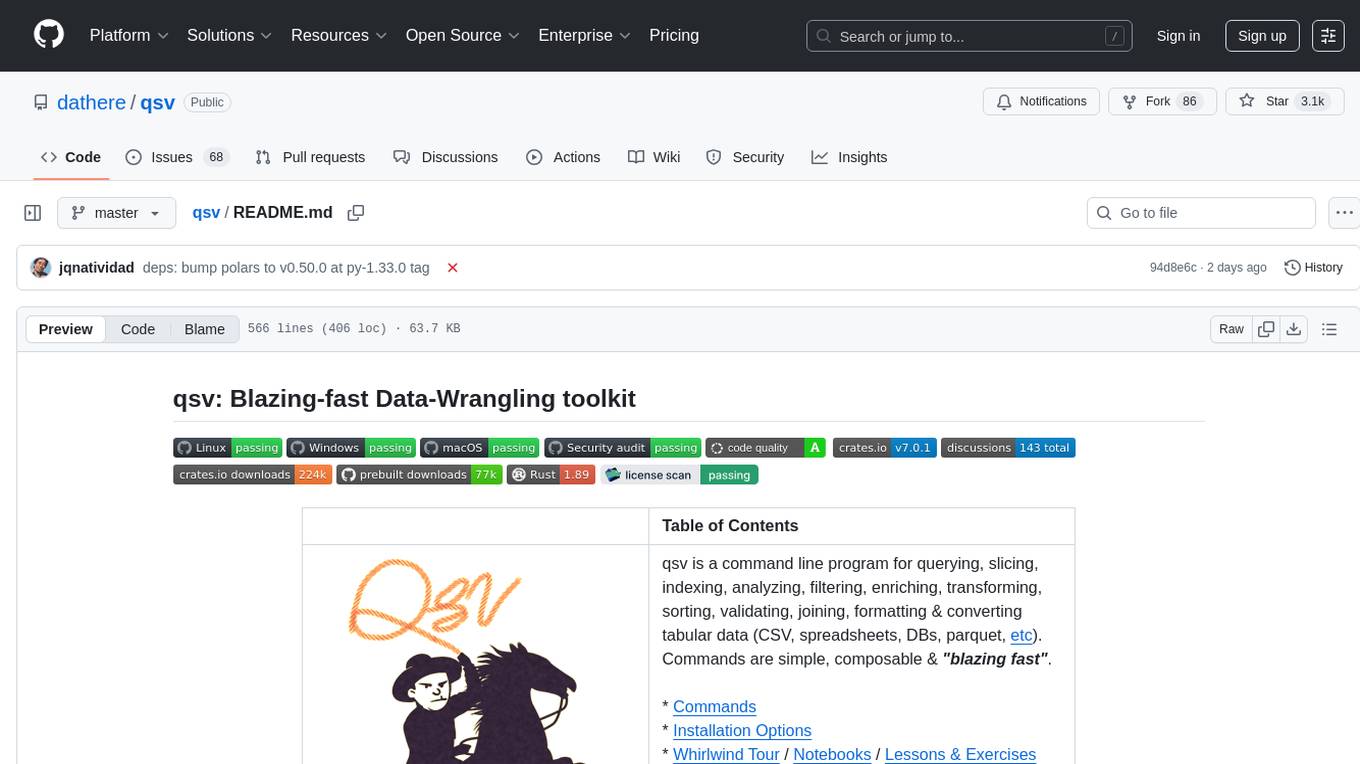
qsv
qsv is a command line program for querying, slicing, indexing, analyzing, filtering, enriching, transforming, sorting, validating, joining, formatting & converting tabular data (CSV, spreadsheets, DBs, parquet, etc). Commands are simple, composable & 'blazing fast'. It is a blazing-fast data-wrangling toolkit with a focus on speed, processing very large files, and being a complete data-wrangling toolkit. It is designed to be portable, easy to use, secure, and easy to contribute to. qsv follows the RFC 4180 CSV standard, requires UTF-8 encoding, and supports various file formats. It has extensive shell completion support, automatic compression/decompression using Snappy, and supports environment variables and dotenv files. qsv has a comprehensive test suite and is dual-licensed under MIT or the UNLICENSE.
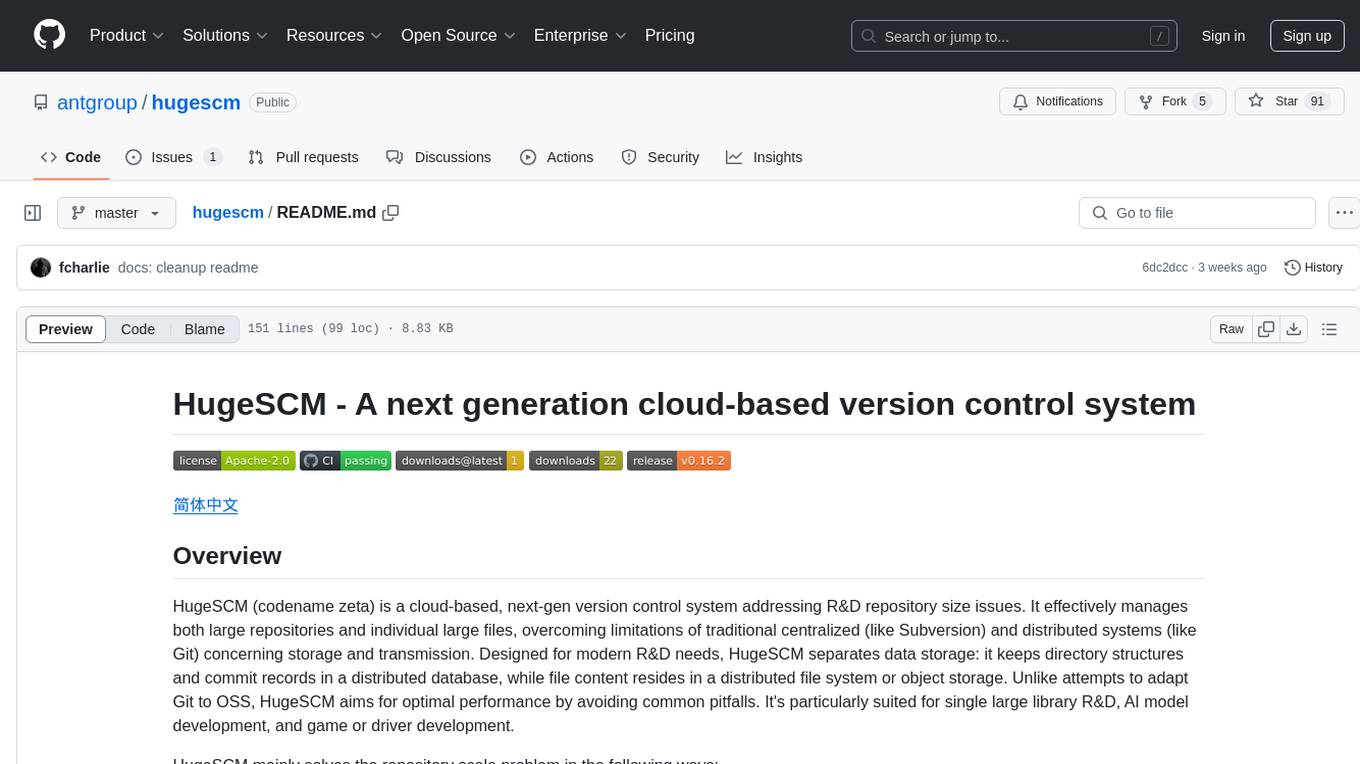
hugescm
HugeSCM is a cloud-based version control system designed to address R&D repository size issues. It effectively manages large repositories and individual large files by separating data storage and utilizing advanced algorithms and data structures. It aims for optimal performance in handling version control operations of large-scale repositories, making it suitable for single large library R&D, AI model development, and game or driver development.
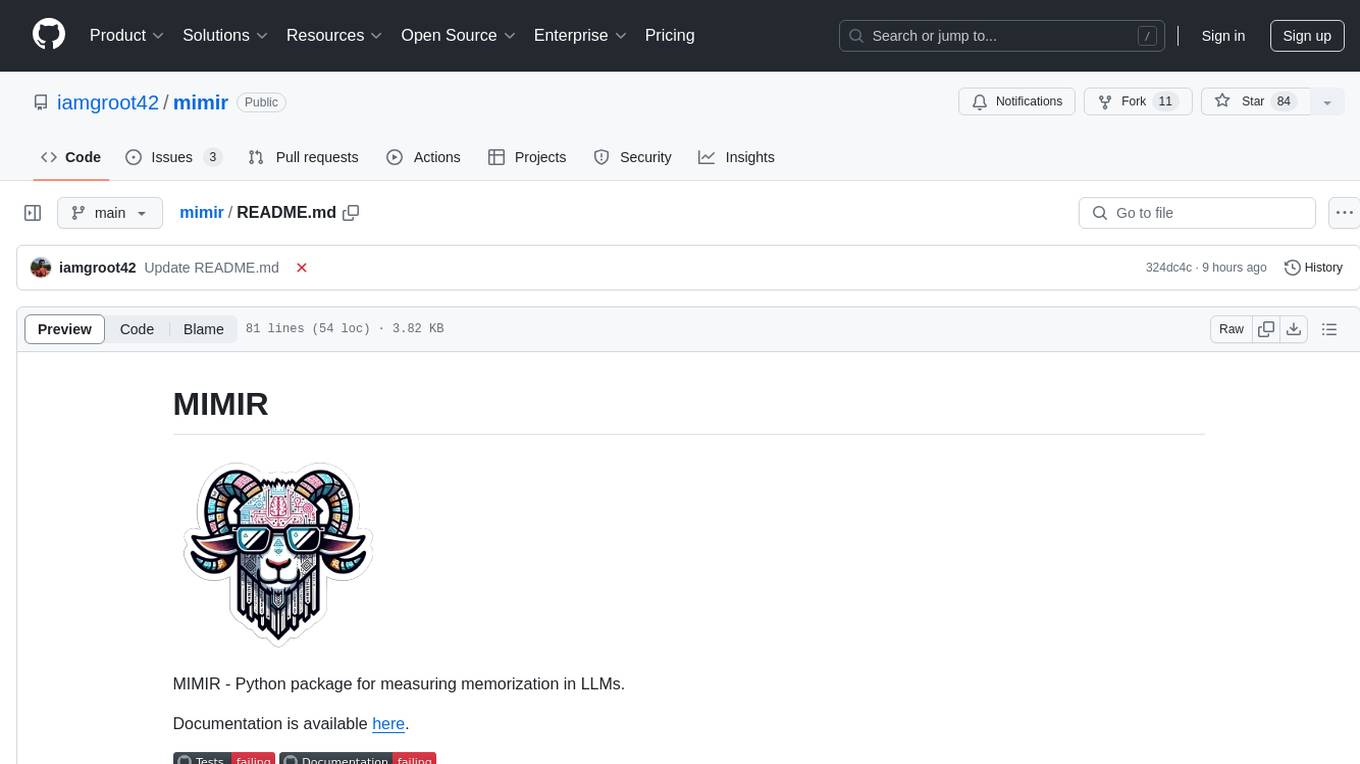
mimir
MIMIR is a Python package designed for measuring memorization in Large Language Models (LLMs). It provides functionalities for conducting experiments related to membership inference attacks on LLMs. The package includes implementations of various attacks such as Likelihood, Reference-based, Zlib Entropy, Neighborhood, Min-K% Prob, Min-K%++, Gradient Norm, and allows users to extend it by adding their own datasets and attacks.
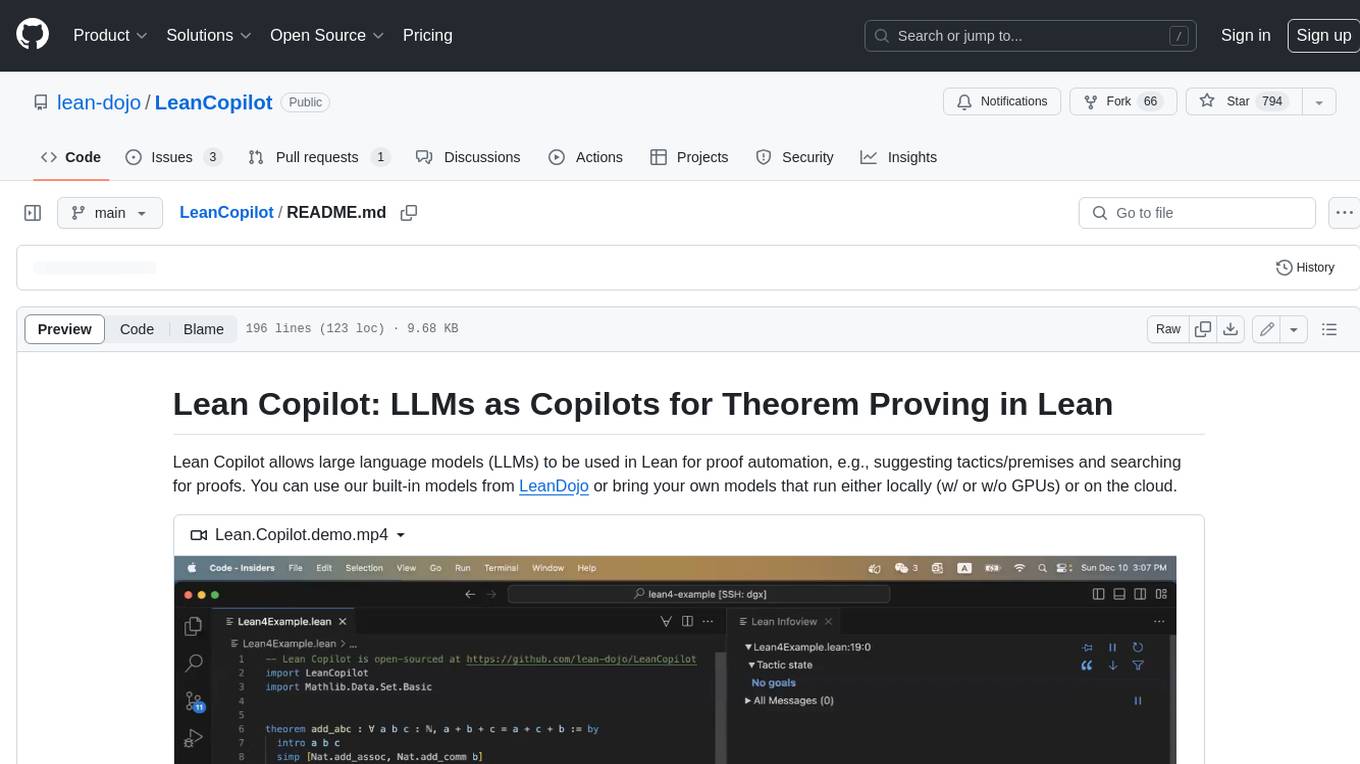
LeanCopilot
Lean Copilot is a tool that enables the use of large language models (LLMs) in Lean for proof automation. It provides features such as suggesting tactics/premises, searching for proofs, and running inference of LLMs. Users can utilize built-in models from LeanDojo or bring their own models to run locally or on the cloud. The tool supports platforms like Linux, macOS, and Windows WSL, with optional CUDA and cuDNN for GPU acceleration. Advanced users can customize behavior using Tactic APIs and Model APIs. Lean Copilot also allows users to bring their own models through ExternalGenerator or ExternalEncoder. The tool comes with caveats such as occasional crashes and issues with premise selection and proof search. Users can get in touch through GitHub Discussions for questions, bug reports, feature requests, and suggestions. The tool is designed to enhance theorem proving in Lean using LLMs.
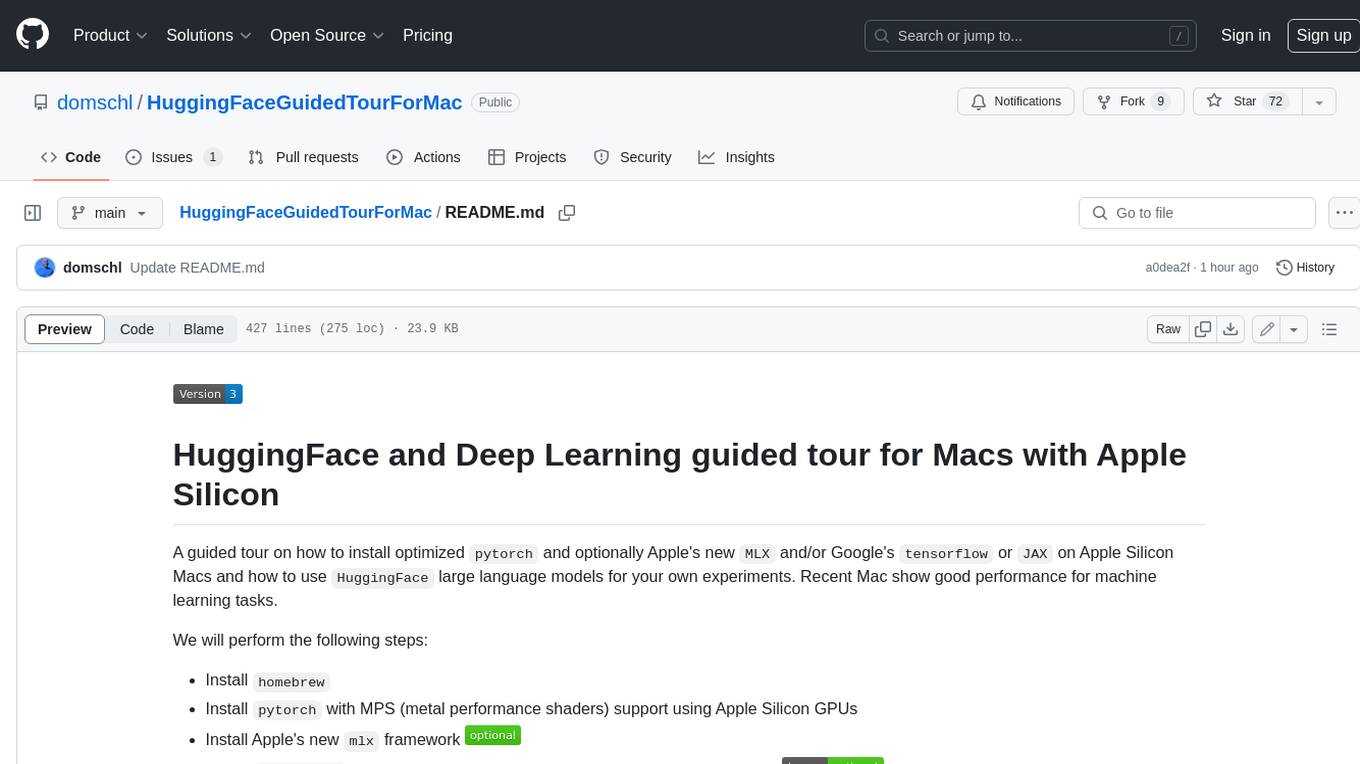
HuggingFaceGuidedTourForMac
HuggingFaceGuidedTourForMac is a guided tour on how to install optimized pytorch and optionally Apple's new MLX, JAX, and TensorFlow on Apple Silicon Macs. The repository provides steps to install homebrew, pytorch with MPS support, MLX, JAX, TensorFlow, and Jupyter lab. It also includes instructions on running large language models using HuggingFace transformers. The repository aims to help users set up their Macs for deep learning experiments with optimized performance.
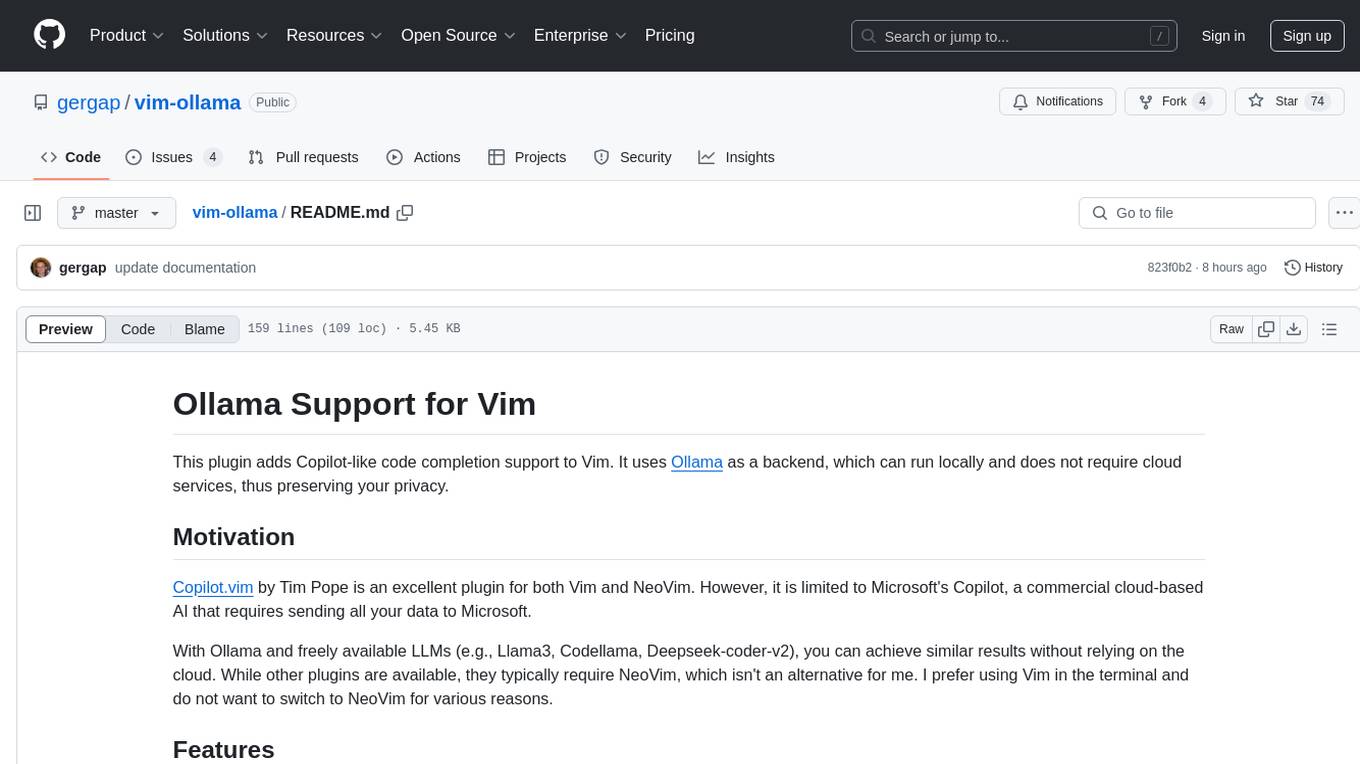
vim-ollama
The 'vim-ollama' plugin for Vim adds Copilot-like code completion support using Ollama as a backend, enabling intelligent AI-based code completion and integrated chat support for code reviews. It does not rely on cloud services, preserving user privacy. The plugin communicates with Ollama via Python scripts for code completion and interactive chat, supporting Vim only. Users can configure LLM models for code completion tasks and interactive conversations, with detailed installation and usage instructions provided in the README.
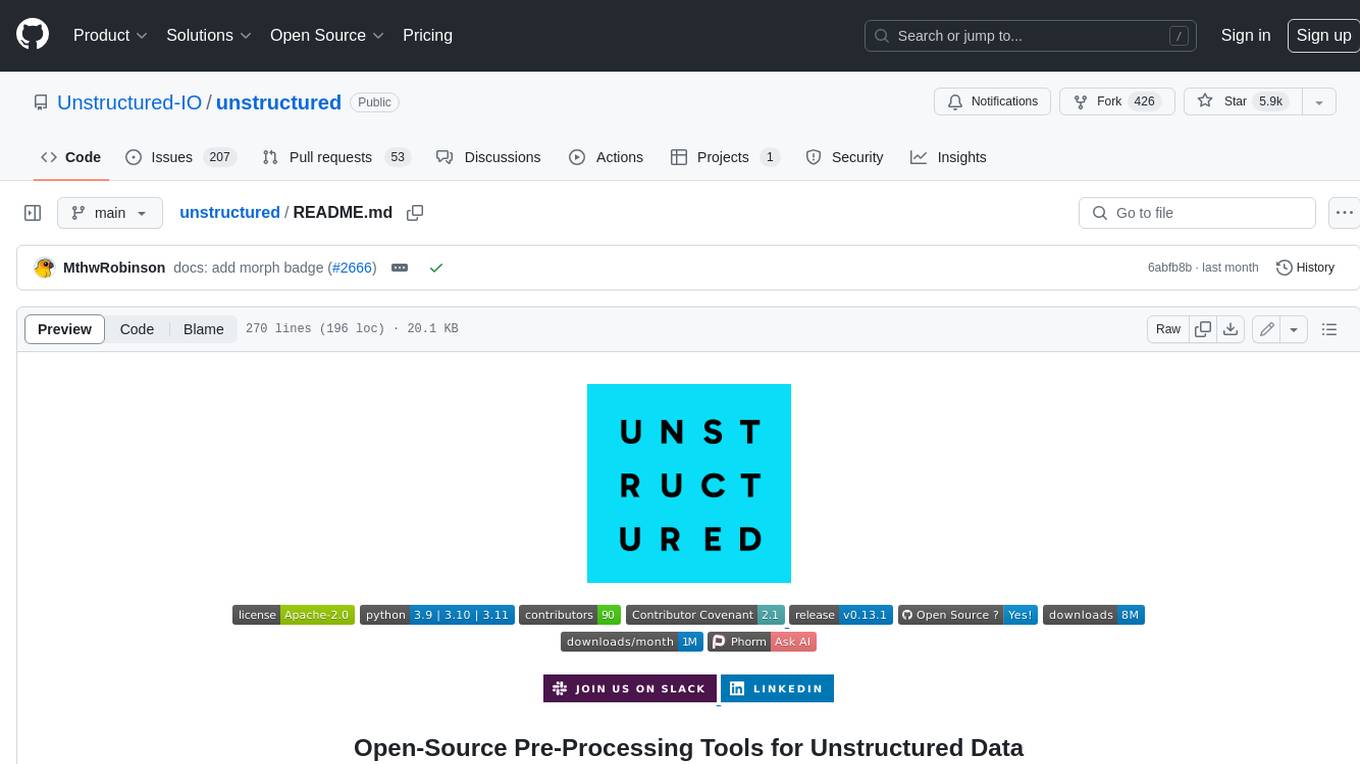
unstructured
The `unstructured` library provides open-source components for ingesting and pre-processing images and text documents, such as PDFs, HTML, Word docs, and many more. The use cases of `unstructured` revolve around streamlining and optimizing the data processing workflow for LLMs. `unstructured` modular functions and connectors form a cohesive system that simplifies data ingestion and pre-processing, making it adaptable to different platforms and efficient in transforming unstructured data into structured outputs.
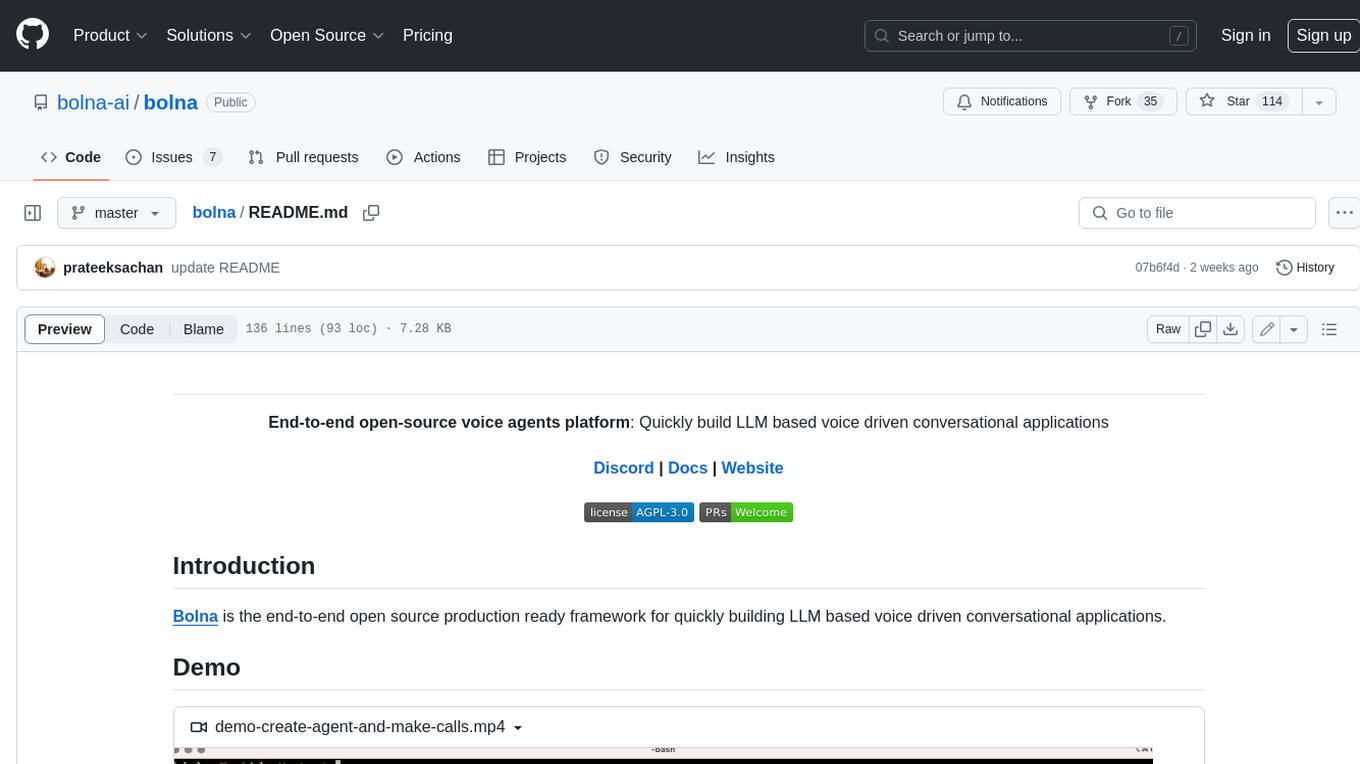
bolna
Bolna is an open-source platform for building voice-driven conversational applications using large language models (LLMs). It provides a comprehensive set of tools and integrations to handle various aspects of voice-based interactions, including telephony, transcription, LLM-based conversation handling, and text-to-speech synthesis. Bolna simplifies the process of creating voice agents that can perform tasks such as initiating phone calls, transcribing conversations, generating LLM-powered responses, and synthesizing speech. It supports multiple providers for each component, allowing users to customize their setup based on their specific needs. Bolna is designed to be easy to use, with a straightforward local setup process and well-documented APIs. It is also extensible, enabling users to integrate with other telephony providers or add custom functionality.
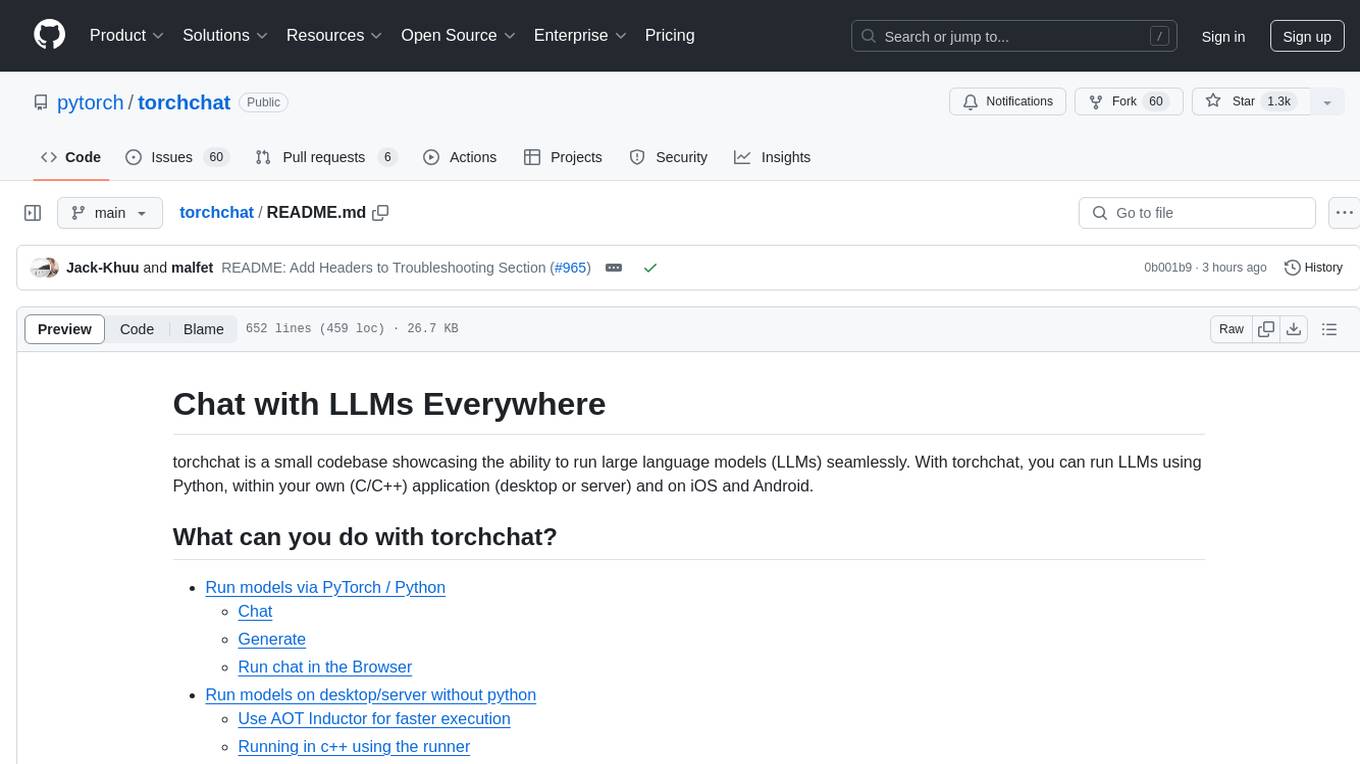
torchchat
torchchat is a codebase showcasing the ability to run large language models (LLMs) seamlessly. It allows running LLMs using Python in various environments such as desktop, server, iOS, and Android. The tool supports running models via PyTorch, chatting, generating text, running chat in the browser, and running models on desktop/server without Python. It also provides features like AOT Inductor for faster execution, running in C++ using the runner, and deploying and running on iOS and Android. The tool supports popular hardware and OS including Linux, Mac OS, Android, and iOS, with various data types and execution modes available.
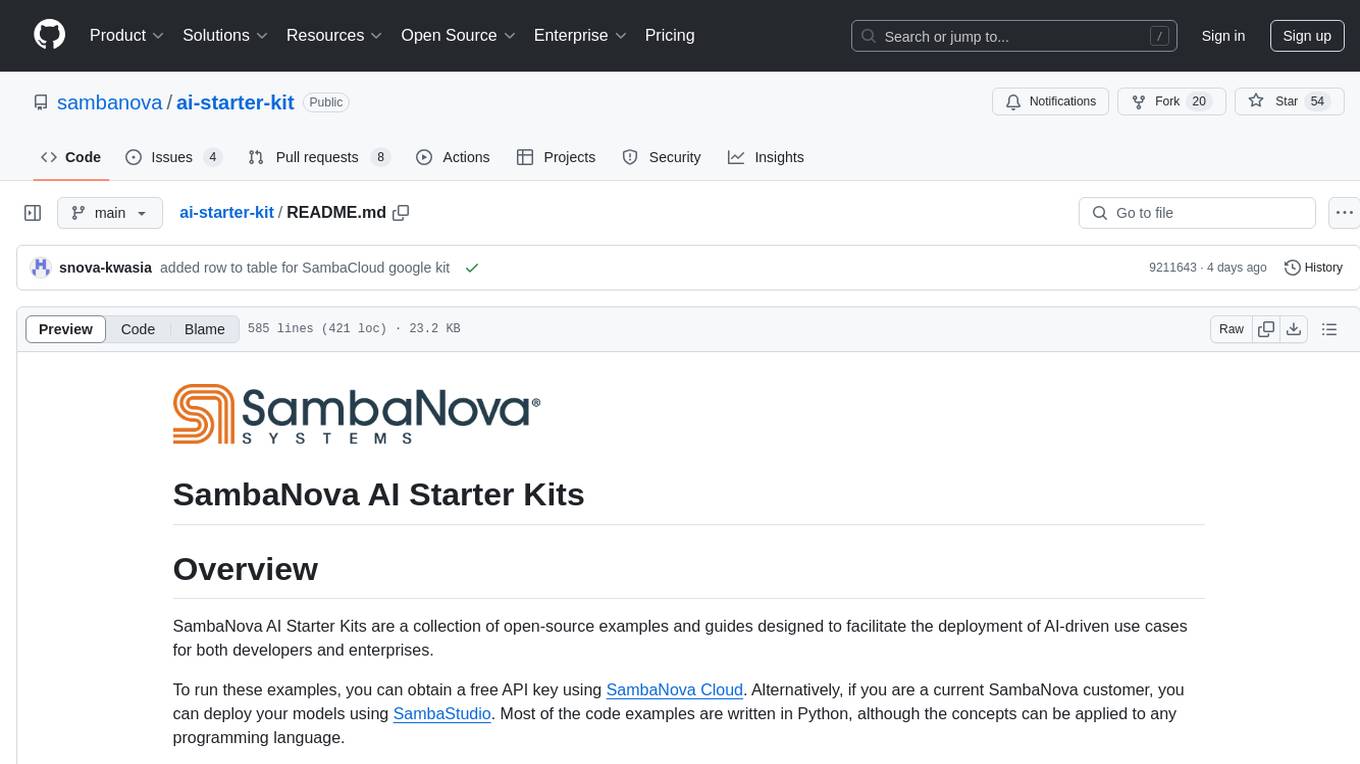
ai-starter-kit
SambaNova AI Starter Kits is a collection of open-source examples and guides designed to facilitate the deployment of AI-driven use cases for developers and enterprises. The kits cover various categories such as Data Ingestion & Preparation, Model Development & Optimization, Intelligent Information Retrieval, and Advanced AI Capabilities. Users can obtain a free API key using SambaNova Cloud or deploy models using SambaStudio. Most examples are written in Python but can be applied to any programming language. The kits provide resources for tasks like text extraction, fine-tuning embeddings, prompt engineering, question-answering, image search, post-call analysis, and more.
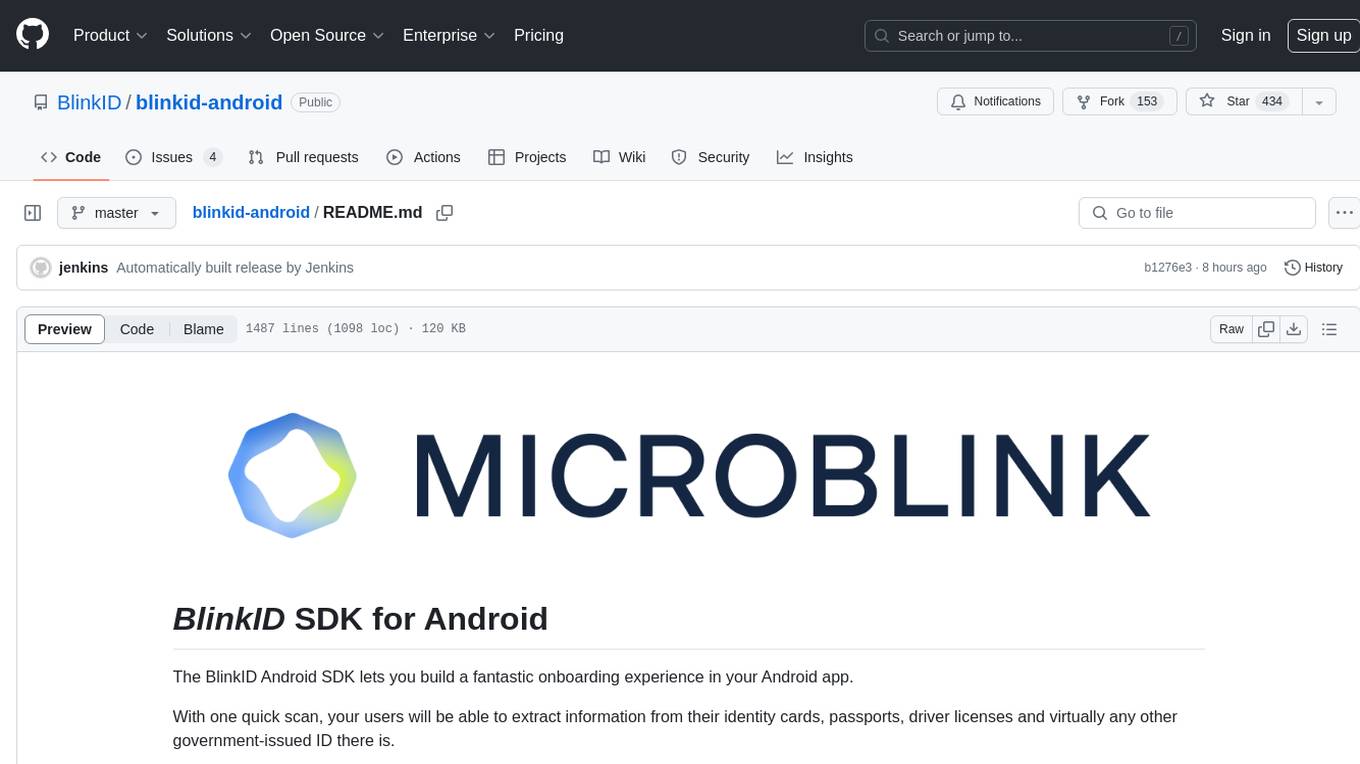
blinkid-android
The BlinkID Android SDK is a comprehensive solution for implementing secure document scanning and extraction. It offers powerful capabilities for extracting data from a wide range of identification documents. The SDK provides features for integrating document scanning into Android apps, including camera requirements, SDK resource pre-bundling, customizing the UX, changing default strings and localization, troubleshooting integration difficulties, and using the SDK through various methods. It also offers options for completely custom UX with low-level API integration. The SDK size is optimized for different processor architectures, and API documentation is available for reference. For any questions or support, users can contact the Microblink team at help.microblink.com.
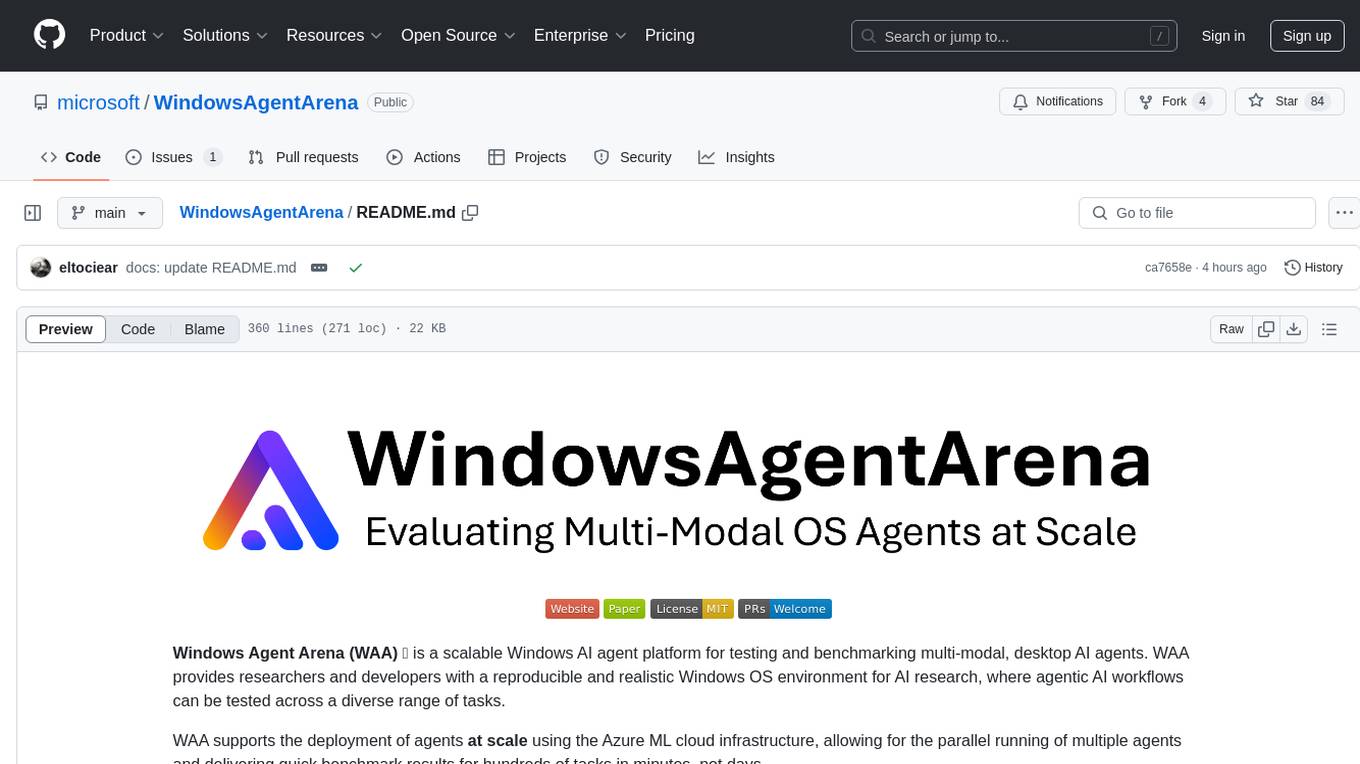
WindowsAgentArena
Windows Agent Arena (WAA) is a scalable Windows AI agent platform designed for testing and benchmarking multi-modal, desktop AI agents. It provides researchers and developers with a reproducible and realistic Windows OS environment for AI research, enabling testing of agentic AI workflows across various tasks. WAA supports deploying agents at scale using Azure ML cloud infrastructure, allowing parallel running of multiple agents and delivering quick benchmark results for hundreds of tasks in minutes.
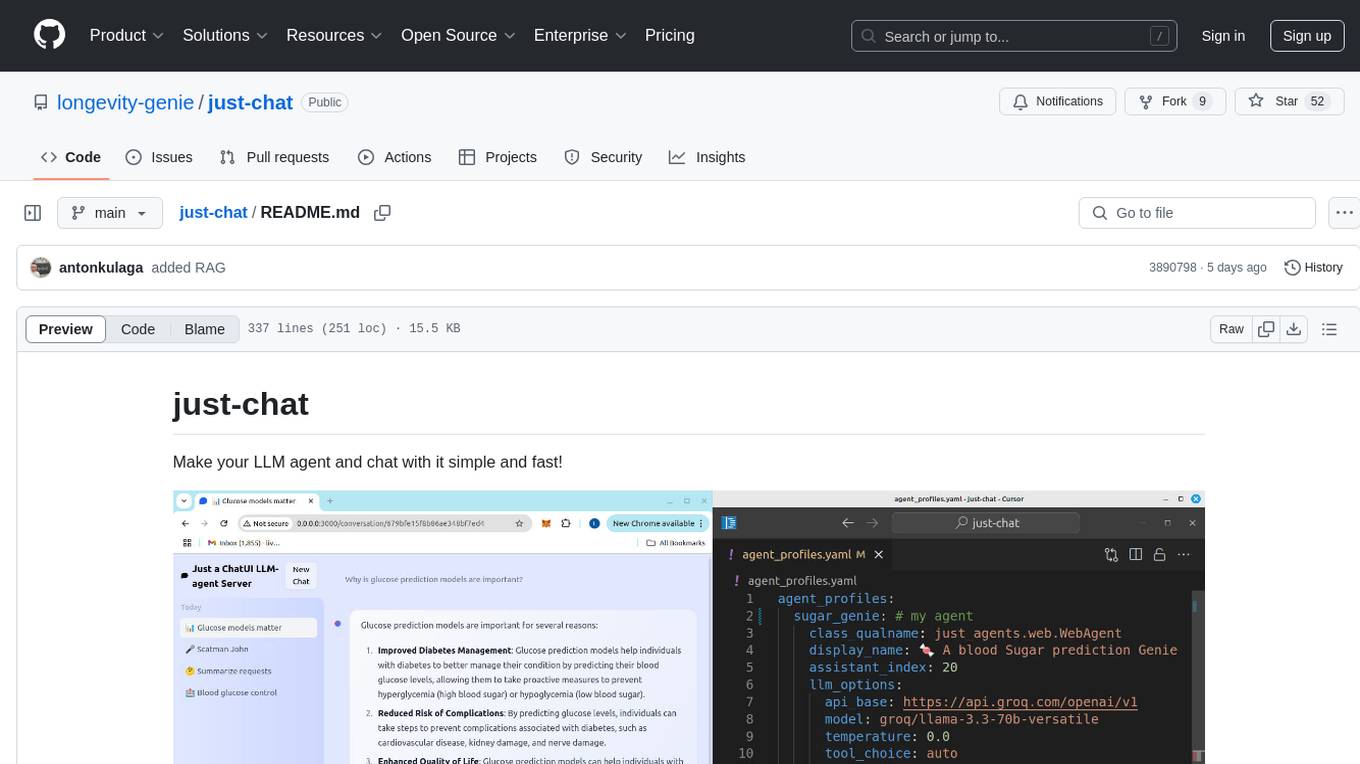
just-chat
Just-Chat is a containerized application that allows users to easily set up and chat with their AI agent. Users can customize their AI assistant using a YAML file, add new capabilities with Python tools, and interact with the agent through a chat web interface. The tool supports various modern models like DeepSeek Reasoner, ChatGPT, LLAMA3.3, etc. Users can also use semantic search capabilities with MeiliSearch to find and reference relevant information based on meaning. Just-Chat requires Docker or Podman for operation and provides detailed installation instructions for both Linux and Windows users.
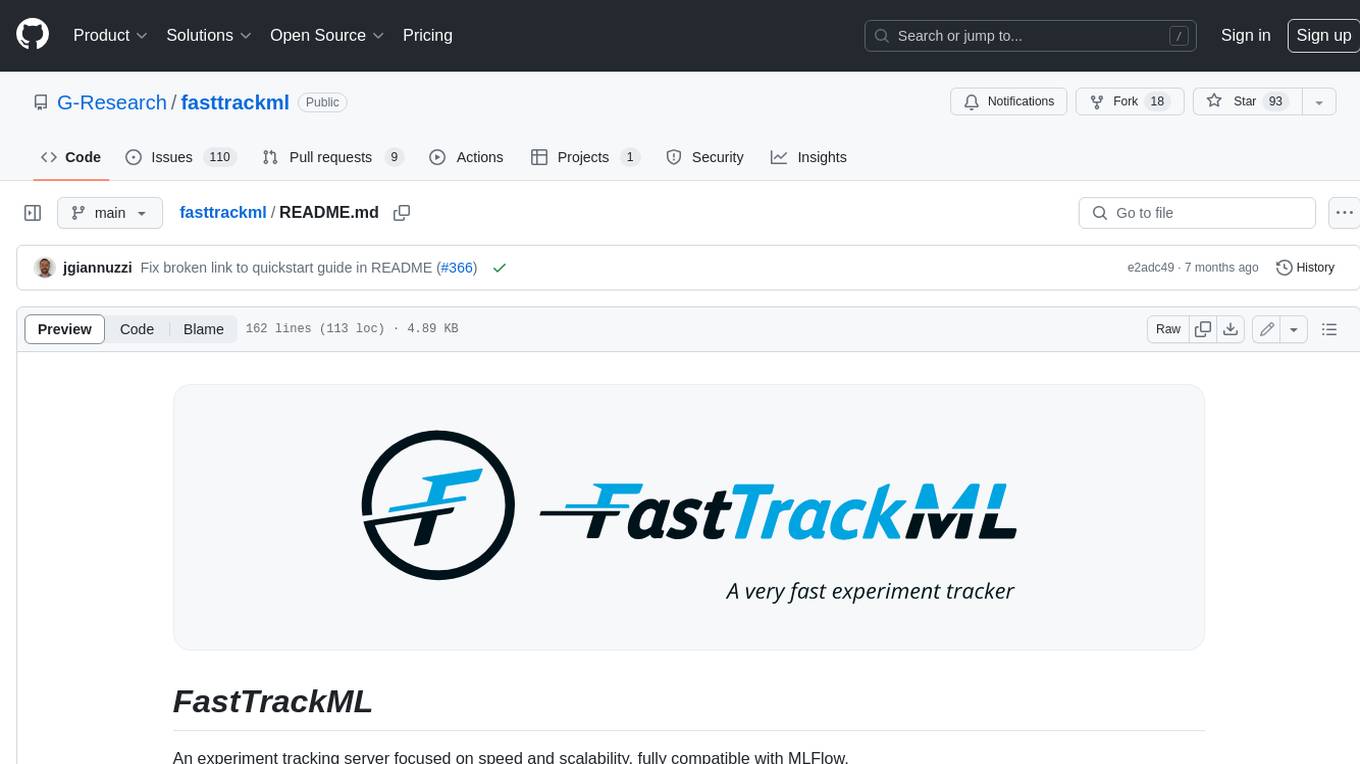
fasttrackml
FastTrackML is an experiment tracking server focused on speed and scalability, fully compatible with MLFlow. It provides a user-friendly interface to track and visualize your machine learning experiments, making it easy to compare different models and identify the best performing ones. FastTrackML is open source and can be easily installed and run with pip or Docker. It is also compatible with the MLFlow Python package, making it easy to integrate with your existing MLFlow workflows.
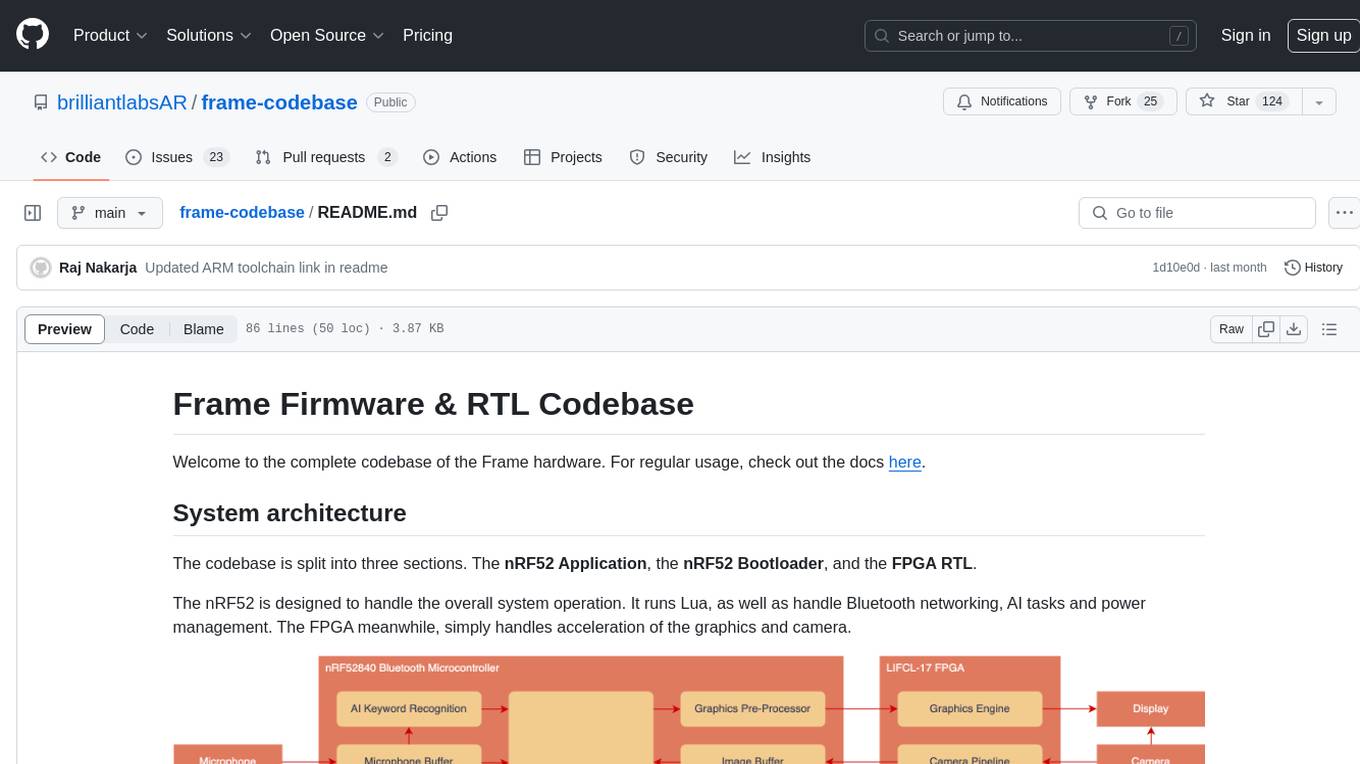
frame-codebase
The Frame Firmware & RTL Codebase is a comprehensive repository containing code for the Frame hardware system architecture. It includes sections for nRF52 Application, nRF52 Bootloader, and FPGA RTL. The nRF52 handles system operation, Lua scripting, Bluetooth networking, AI tasks, and power management, while the FPGA accelerates graphics and camera processing. The repository provides instructions for firmware development, debugging in VSCode, and FPGA development using tools like ARM GCC Toolchain, nRF Command Line Tools, Yosys, Project Oxide, and nextpnr. Users can build and flash projects for nRF52840 DK, modify FPGA RTL, and access pre-built accelerators bundled in the repo.
For similar tasks

homeassistant-midea-air-appliances-lan
This custom component for Home Assistant adds support for controlling Midea air conditioner and dehumidifier appliances via the local area network. It provides integration for various Midea appliances, allowing users to control settings such as humidity levels, fan speed, and more through Home Assistant. The component supports multiple protocols and entities for different appliance models, offering a comprehensive solution for managing Midea appliances on the local network.
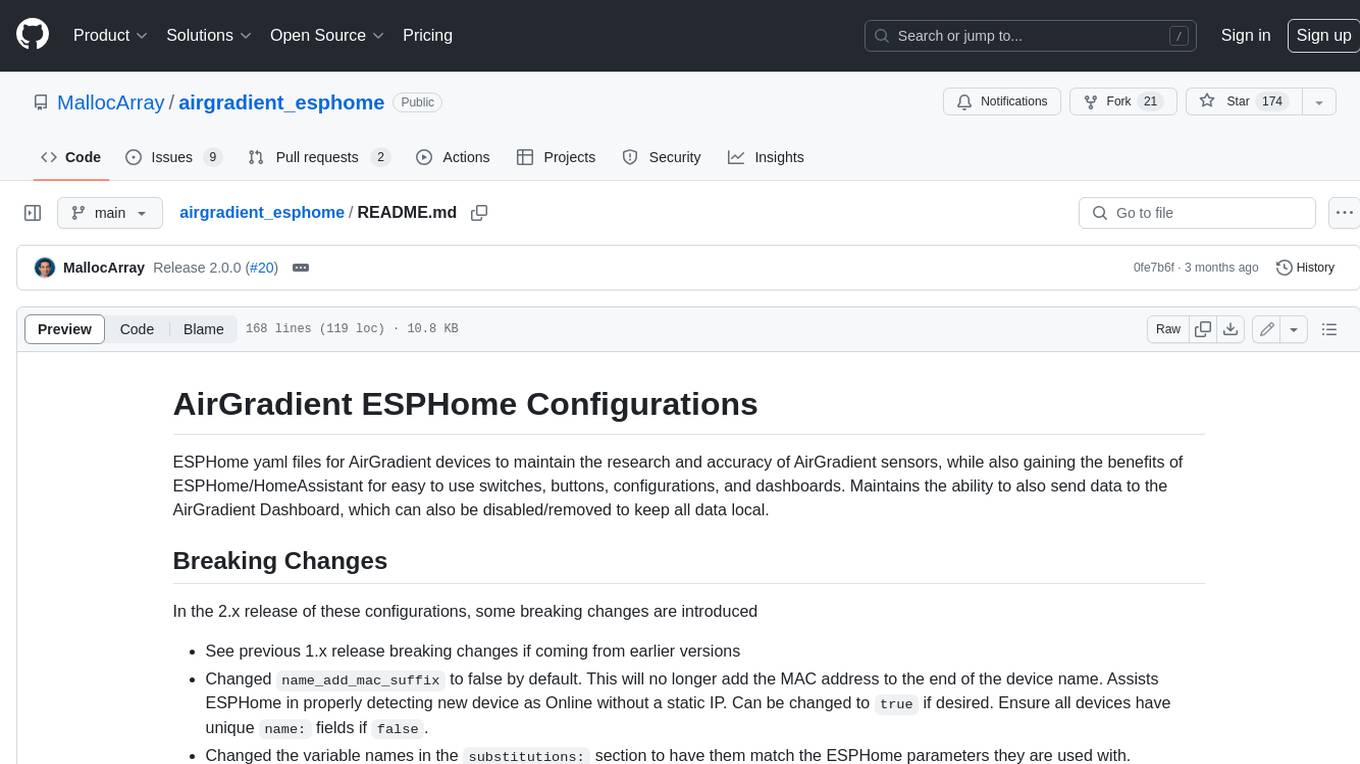
airgradient_esphome
ESPHome yaml files for AirGradient devices to maintain the research and accuracy of AirGradient sensors, while also gaining the benefits of ESPHome/HomeAssistant for easy to use switches, buttons, configurations, and dashboards. Maintains the ability to also send data to the AirGradient Dashboard, which can also be disabled/removed to keep all data local.
For similar jobs
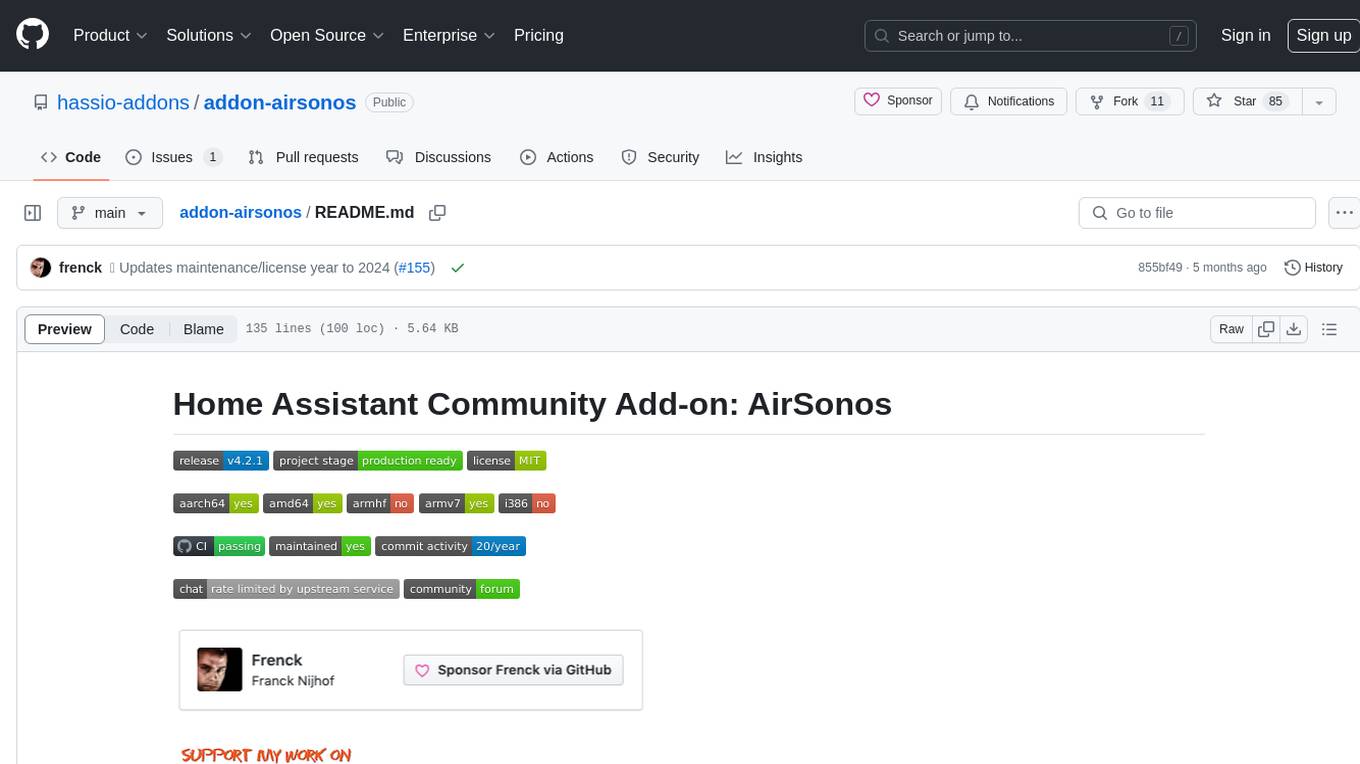
addon-airsonos
AirSonos is a Home Assistant Community Add-on that provides AirPlay capabilities for Sonos (and UPnP) players. It bridges the compatibility gap between Apple devices using AirPlay and Sonos players by creating virtual AirPlay devices for Sonos players in the network. The add-on may also work for other UPnP players like newer Samsung televisions. It is based on the AirConnect project, offering a solution for streaming audio to Sonos devices.
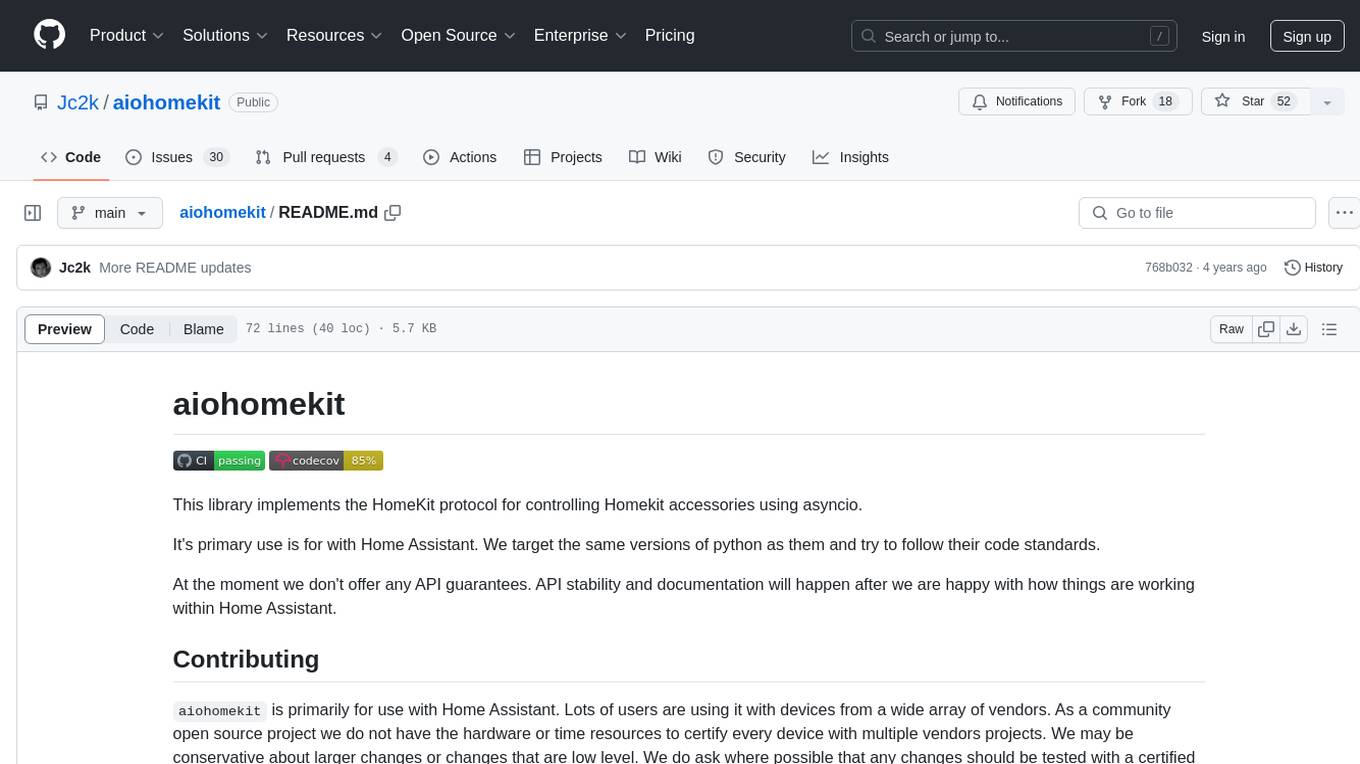
aiohomekit
aiohomekit is a Python library that implements the HomeKit protocol for controlling HomeKit accessories using asyncio. It is primarily used with Home Assistant, targeting the same versions of Python and following their code standards. The library is still under development and does not offer API guarantees yet. It aims to match the behavior of real HAP controllers, even when not strictly specified, and works around issues like JSON formatting, boolean encoding, header sensitivity, and TCP packet splitting. aiohomekit is primarily tested with Phillips Hue and Eve Extend bridges via Home Assistant, but is known to work with many more devices. It does not support BLE accessories and is intended for client-side use only.
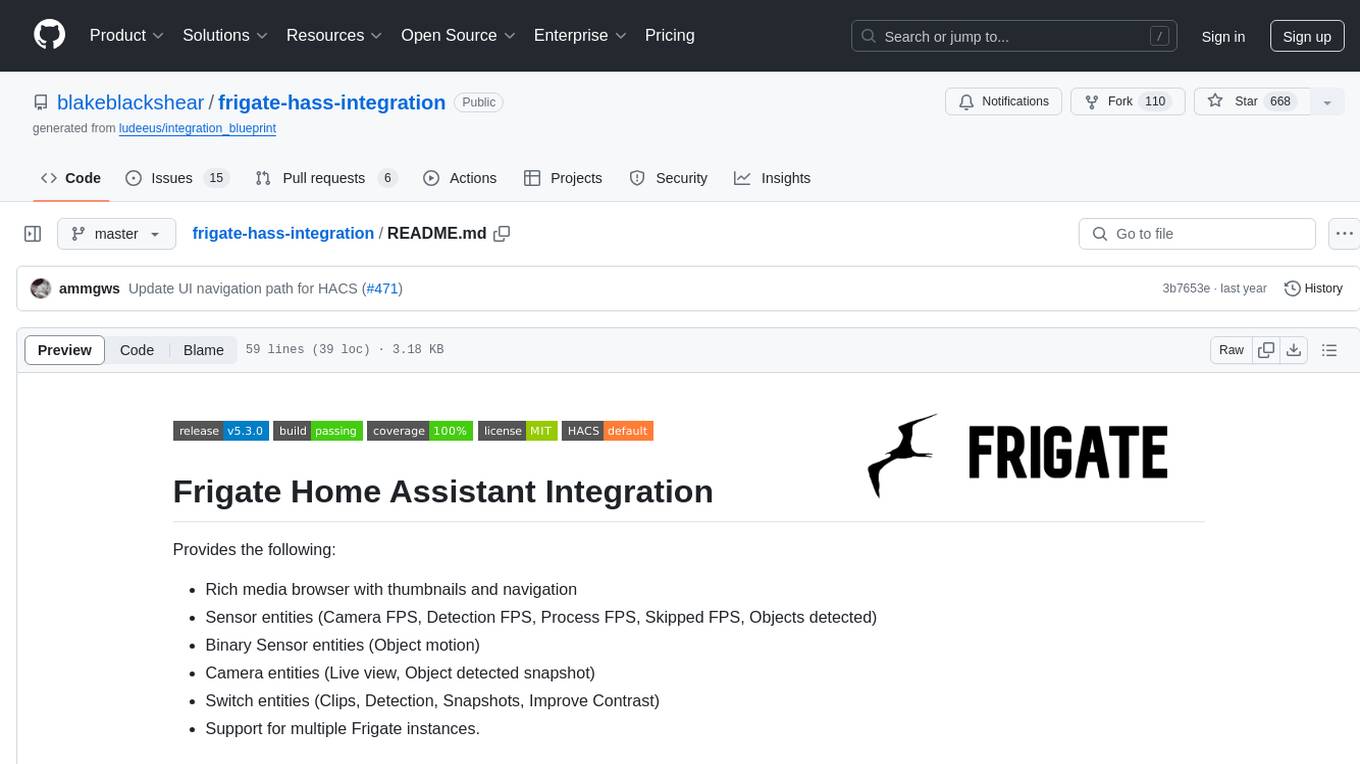
frigate-hass-integration
Frigate Home Assistant Integration provides a rich media browser with thumbnails and navigation, sensor entities for camera FPS, detection FPS, process FPS, skipped FPS, and objects detected, binary sensor entities for object motion, camera entities for live view and object detected snapshot, switch entities for clips, detection, snapshots, and improve contrast, and support for multiple Frigate instances. It offers easy installation via HACS and manual installation options for advanced users. Users need to configure the `mqtt` integration for Frigate to work. Additionally, media browsing and a companion Lovelace card are available for enhanced user experience. Refer to the main Frigate documentation for detailed installation instructions and usage guidance.
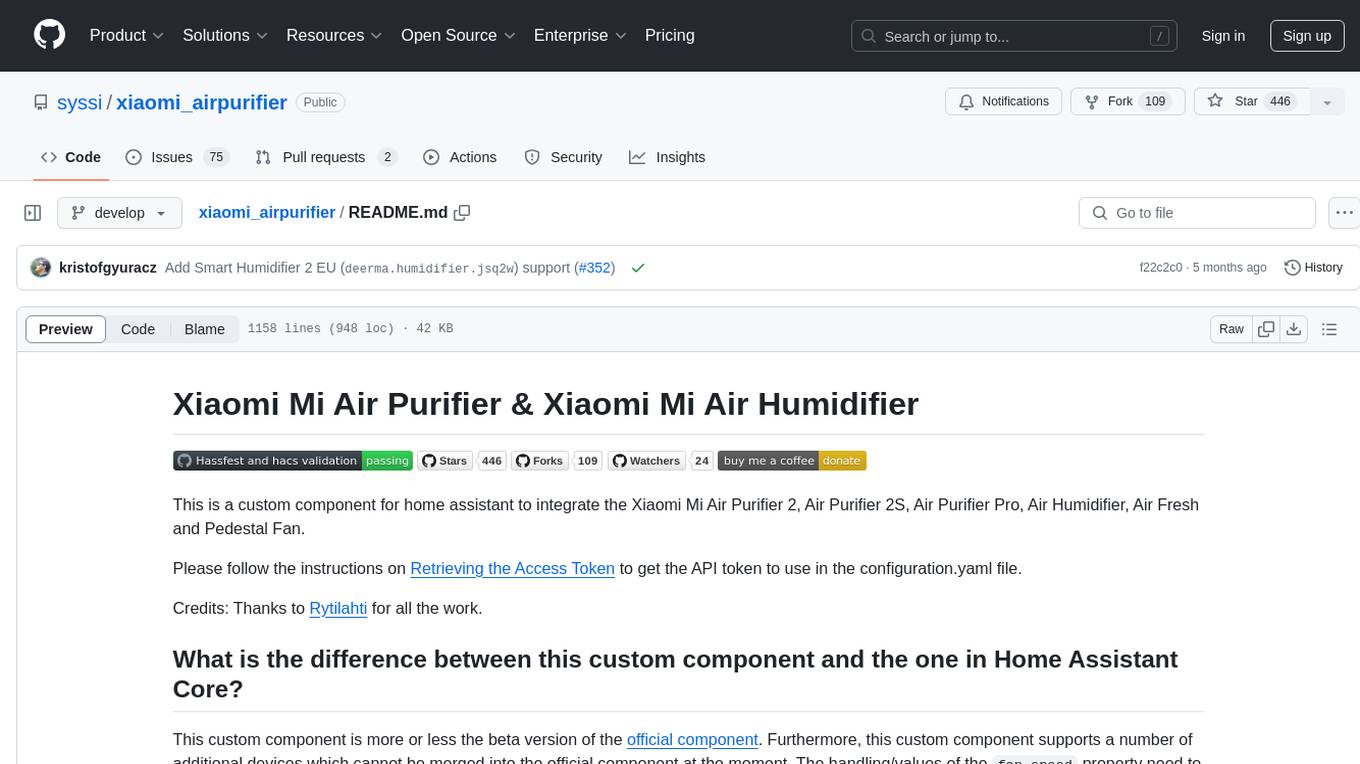
xiaomi_airpurifier
This repository contains a custom component for Home Assistant that integrates various Xiaomi Mi Air Purifier and Xiaomi Mi Air Humidifier models. It provides detailed support for different devices, including power control, preset modes, child lock, LED control, favorite level adjustment, and various attributes monitoring. The custom component offers a more extensive range of supported devices compared to the official Home Assistant component, with additional features and device compatibility. Users can easily set up and configure their Xiaomi air purifiers and humidifiers within Home Assistant for enhanced control and monitoring.

homeassistant-midea-air-appliances-lan
This custom component for Home Assistant adds support for controlling Midea air conditioner and dehumidifier appliances via the local area network. It provides integration for various Midea appliances, allowing users to control settings such as humidity levels, fan speed, and more through Home Assistant. The component supports multiple protocols and entities for different appliance models, offering a comprehensive solution for managing Midea appliances on the local network.
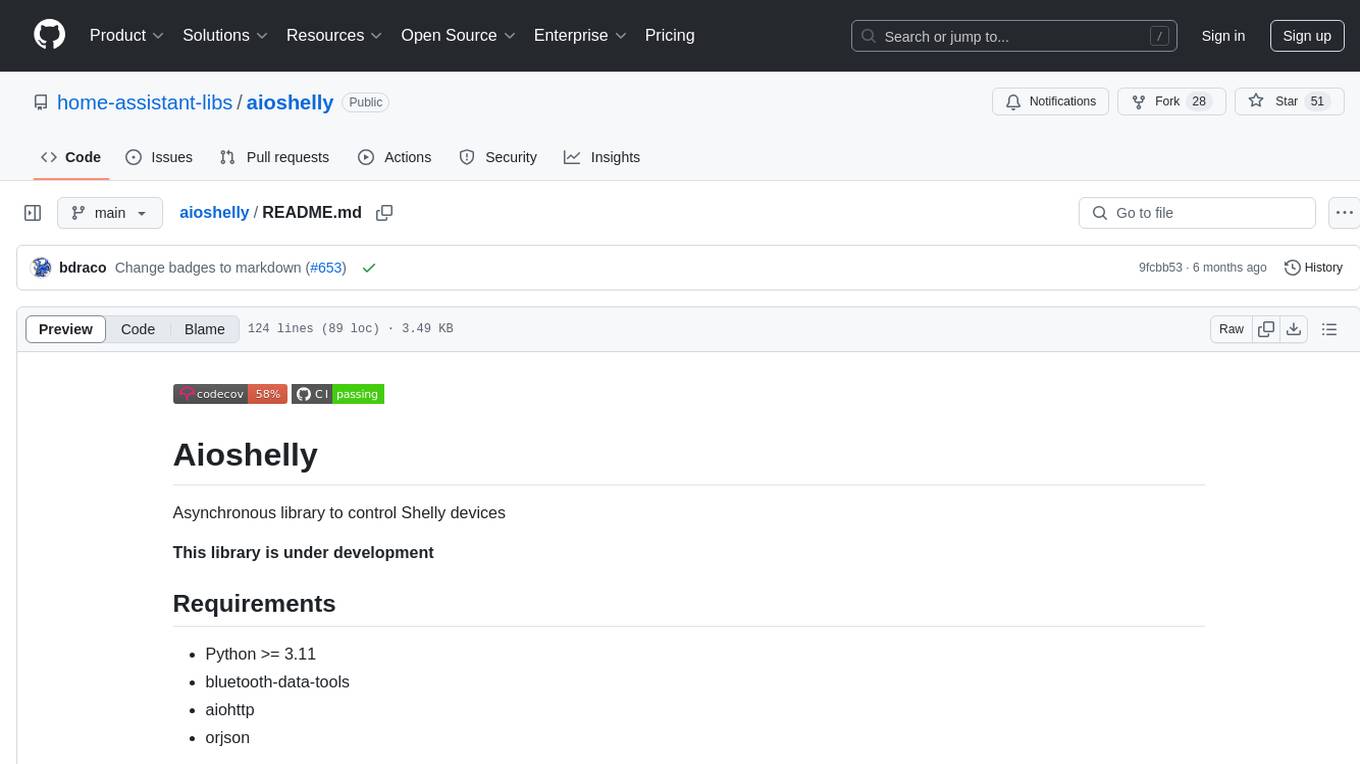
aioshelly
Aioshelly is an asynchronous library designed to control Shelly devices. It is currently under development and requires Python version 3.11 or higher, along with dependencies like bluetooth-data-tools, aiohttp, and orjson. The library provides examples for interacting with Gen1 devices using CoAP protocol and Gen2/Gen3 devices using RPC and WebSocket protocols. Users can easily connect to Shelly devices, retrieve status information, and perform various actions through the provided APIs. The repository also includes example scripts for quick testing and usage guidelines for contributors to maintain consistency with the Shelly API.
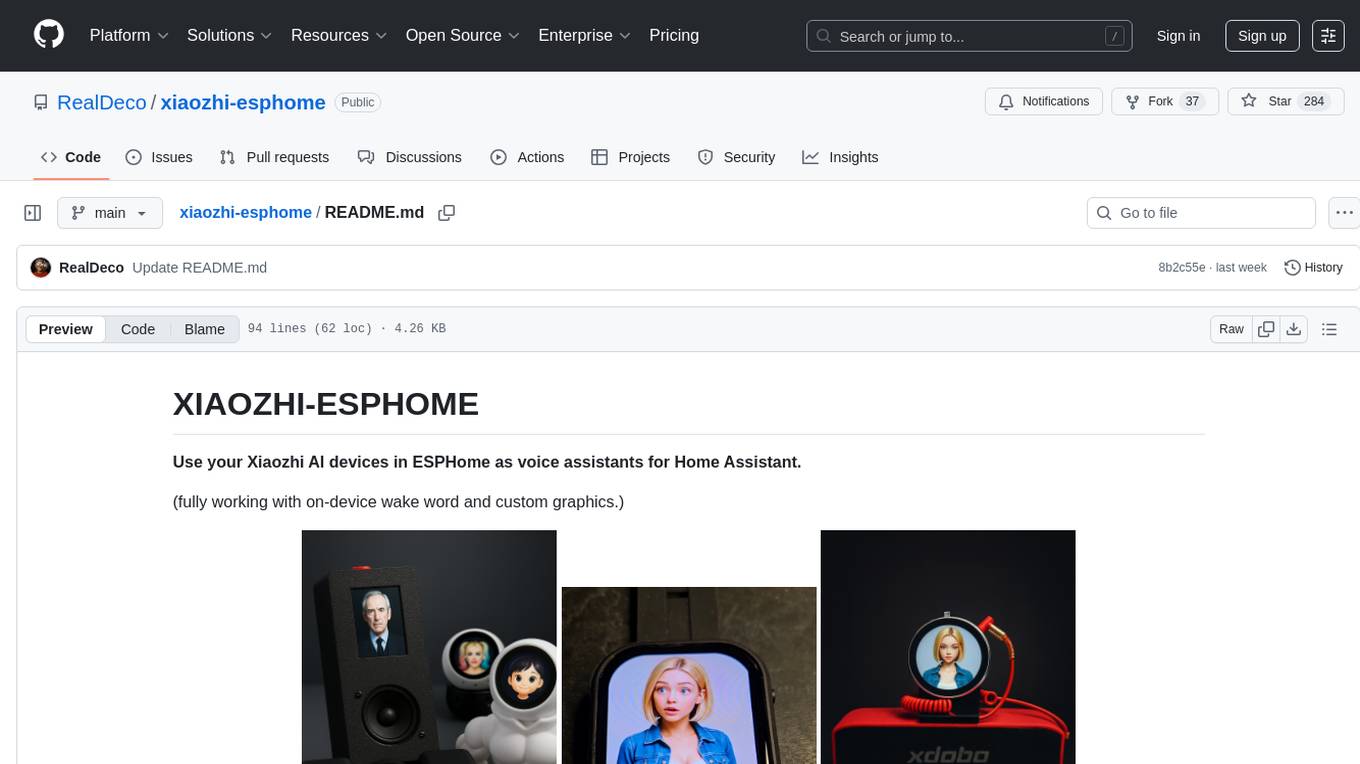
xiaozhi-esphome
This GitHub project provides a simple way to use Xiaozhi-based devices with ESPHome, allowing them to serve as voice assistants integrated with Home Assistant. Users can follow a step-by-step installation guide to connect their devices, edit configurations, and set up the voice assistant. The project supports various devices such as Spotpear Ball, Muma Box, Puck, Guition Taichi pi, Xingzhi Cube, and more. Additionally, it offers links to purchase supported devices and accessories, including 3D files for holders and wireless chargers.
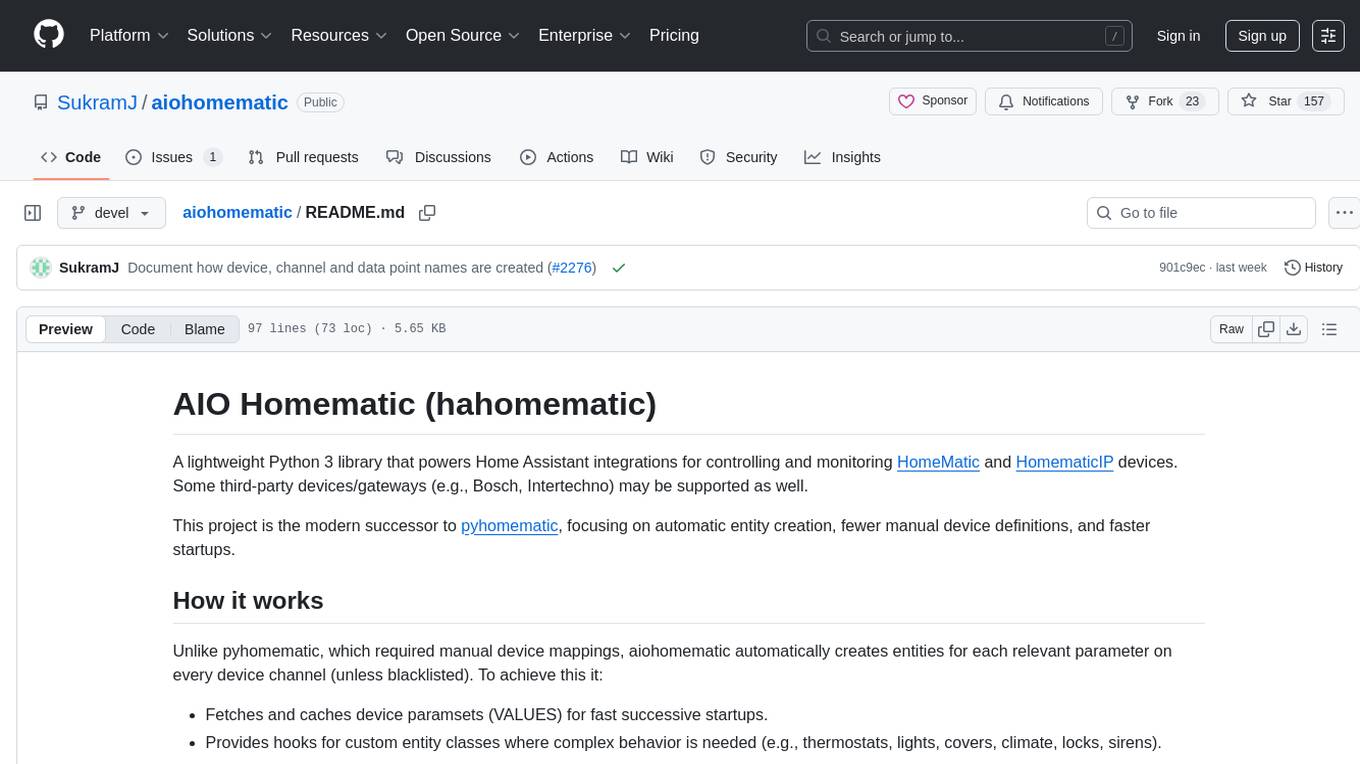
aiohomematic
AIO Homematic (hahomematic) is a lightweight Python 3 library for controlling and monitoring HomeMatic and HomematicIP devices, with support for third-party devices/gateways. It automatically creates entities for device parameters, offers custom entity classes for complex behavior, and includes features like caching paramsets for faster restarts. Designed to integrate with Home Assistant, it requires specific firmware versions for HomematicIP devices. The public API is defined in modules like central, client, model, exceptions, and const, with example usage provided. Useful links include changelog, data point definitions, troubleshooting, and developer resources for architecture, data flow, model extension, and Home Assistant lifecycle.

